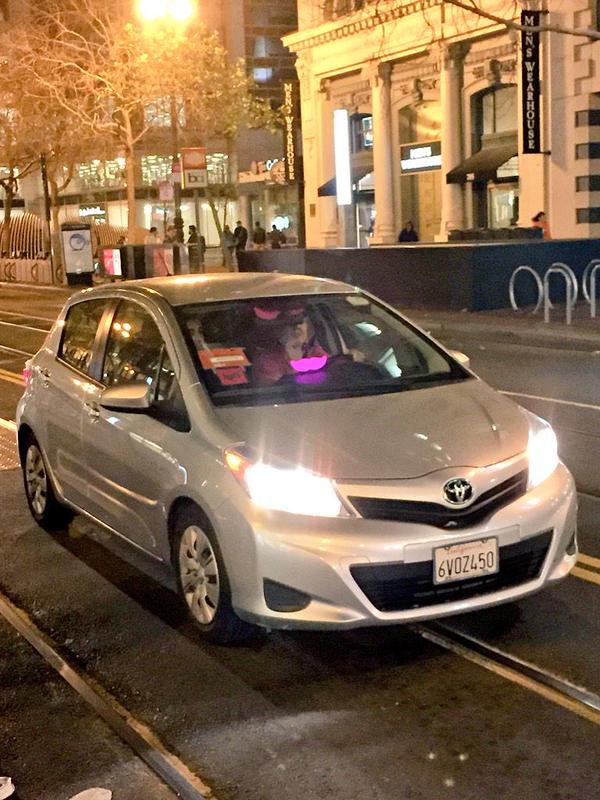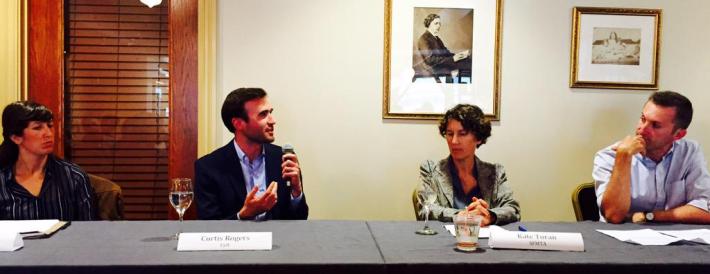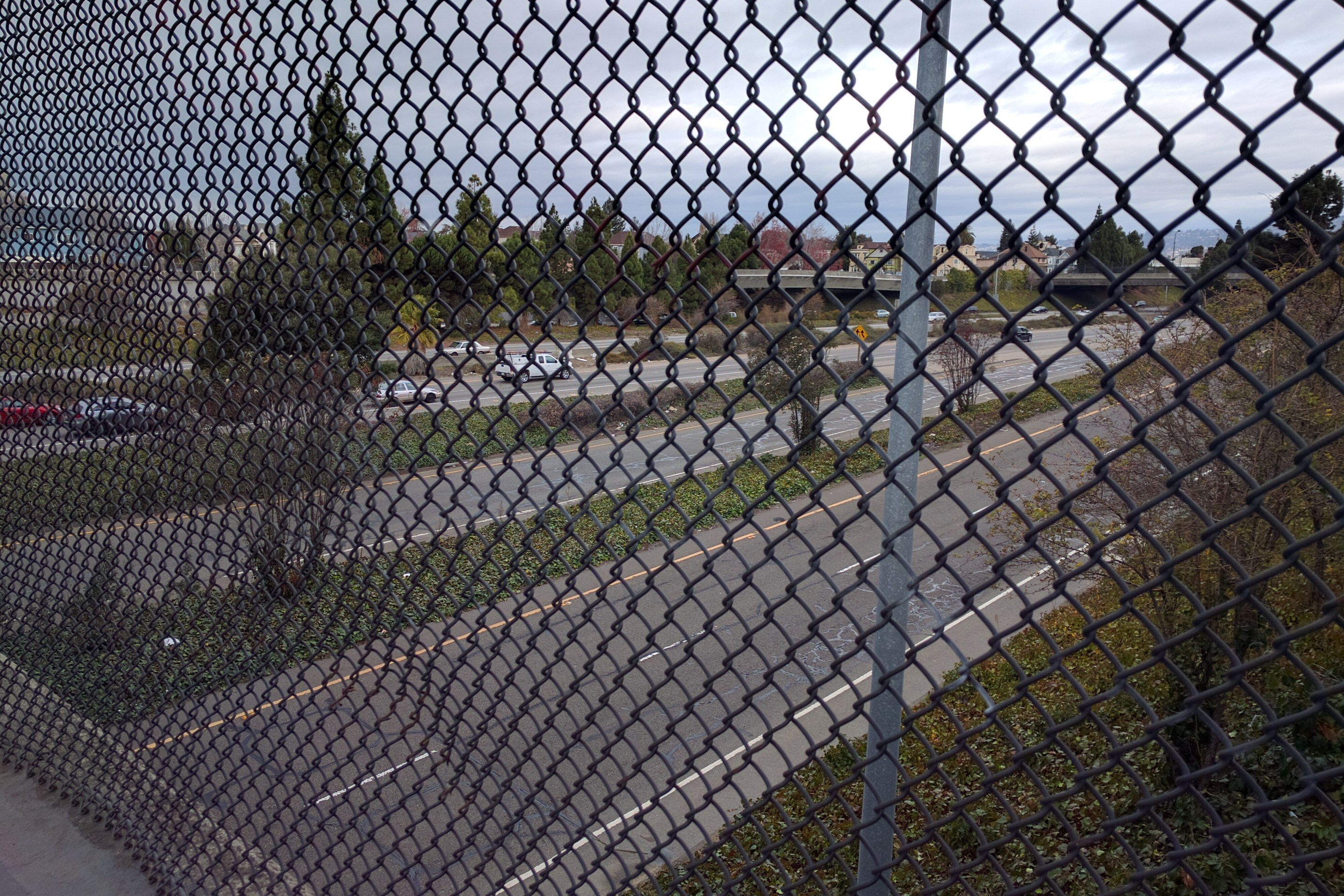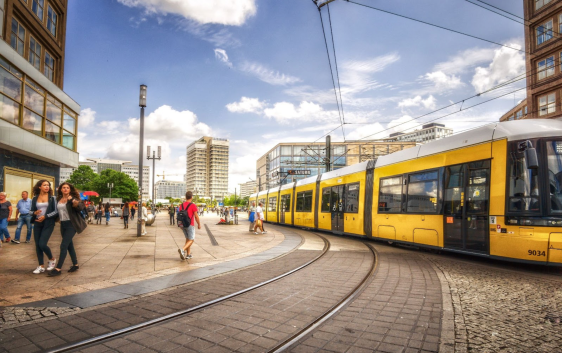As ride-hail services like Lyft and Uber have boomed in San Francisco and other cities, proponents claim they help reduce demand for parking and road space by making it easier for people to own fewer cars. But very little data has been released by the ride-hail companies that would allow experts to assess their impact on streets and traffic.

In a panel discussion yesterday, Lyft's Curtis Rogers emphasized that reducing car ownership is "our end goal that we think we share with the city."
But when Thea Selby of the SF Transit Riders Union pressed Rogers for data to show whether Lyft might be substituting for transit trips more than car trips, he said he couldn't provide it. Rogers insisted, however, that Lyft doesn't want to compete with Muni, walking, or bicycling. "We think we're just one more piece to the puzzle."
"We celebrate Muni getting better," said Rogers. "We're well aware that if we pulled everyone off of Muni and put them in Lyfts, we'd all be going two miles per hour on the road. That's not the solution."
While thousands of ride-hail drivers are estimated to be on city streets every day, Lyft and Uber keep a tight lid on the numbers, usually citing privacy concerns.
Kate Toran, the SFMTA's director of taxis and accessible services, said that any data submitted by Lyft or Uber to government agencies is "under seal," meaning it's not available to the public or city transportation planners.
The lack of data makes it "really challenging to make planning decisions," said Toran. "Reducing auto dependency is a really great goal, but when there's no barrier at all to entry for anyone who wants to drive their personal car into San Francisco and make some money, I think that outweighs the numbers of people who are shedding their vehicles. But again, we don't know."

An August study from the University of California Transportation Center [PDF] did shed some light on the use in SF of ride-hail services.
The study said the effects of ride-hail services "on overall vehicle travel are ambiguous," but that the findings suggest it "has a small but not inconsequential (8%) induced travel effect" of increasing driving.
Researchers conducted 380 surveys at three ride-hail “hot spots” in SF in the spring of 2014. They asked respondents if they would have still made their trips if ride-hail wasn't available. Of those who would have, only 6 percent said they would have driven instead, while 39 percent would have used a traditional taxi. Twenty-four percent said they would have taken a bus, and 9 percent rail.
In an op-ed in the SF Chronicle last week, SFTRU's Daniel Sisson wrote that while ride-hail services can be useful, he's worried their widespread use might reduce the pressure on city officials to improve Muni.
Even I, an avid transit supporter, often take Lyft or a Scoot [scooter-share service] when I’m running late, need to go diagonally across town, or it’s late at night. I shouldn’t have to, though -- public transit should be a reliable option. The transit startups should just be one small slice of the transit pie.
As to whether ride-hail apps -- or "ridesourcing" services, to use the UC study's term -- are helping to reduce car ownership, the study authors said 90 percent of vehicle owners "said they had not changed their ownership levels since they began using ridesourcing, and those who did were as likely to own more cars as those with fewer, so the change likely had little to do with the presence of ridesourcing."
In March, Lyft announced that for a majority of Lyft trips in San Francisco, customers enable the "Lyft Line" carpool feature, meaning most passengers are open to sharing rides with other people taking similar trips. But Lyft Line users aren’t always matched up and the company wouldn’t tell us how many Lyft trips are actually shared. Uber hasn't released stats on its similar UberPOOL service.
At yesterday's panel discussion on making it easier for commuters to get to rail stations, Rogers said that 25 percent of Lyft trips on the Peninsula are to or from Caltrain stations.
Rogers manages the "Lyft for Work" program, which lets employers give credits to employees for Lyft rides shared with co-workers, often to get to and from stations.
While more employers are interested in the program in the Bay Area than in any other region, he said, many still offer free parking to their employees, which is the largest barrier to enticing commuters to get to work without driving.
Free parking is "the problem we're all trying to solve," said Rogers. It's "a legacy more powerful than I ever imagined."





